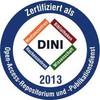Preview |
PDF, English
Download (11MB) | Terms of use |
Abstract
In Magnetic Resonance Imaging (MRI)-guided needle interventions, typically 2D real-time imaging is used for the visual tracking of the needle. For imaging planes insufficiently aligned with the needle, realignment can become necessary for better needle display. In this work, techniques for the visualization of metallic needles with MRI and rapid 3D needle localization for automatic imaging plane alignment were developed and investigated.
First, the image artifact of a needle was characterized quantitatively for conventional gradient-echo (GRE) imaging with the fast low-angle shot (FLASH) technique, as well as for a positive, susceptibility-based imaging technique (dephased GRE). A model-based method for needle localization, using a baseline-subtracted radial FLASH k-space acquisition, was then developed and evaluated in phantom measurements, as well as demonstrated in an animal experiment. Additionally, a localization method based on undersampled dephased FLASH imaging and Convolutional Neural Network-based postprocessing was developed, investigated, and compared with the model-based method.
The needle artifacts were well described by the developed quantitative models (measured deviation ≤ 2 pixels). Both developed localization methods allowed for fast 3D needle localization (under 1 s). Feasibility of automatic slice alignment of 2D imaging planes with the detected needles was demonstrated retrospectively.
The developed methods for rapid, passive 3D needle localization can accelerate the workflow of MRI-guided interventions and facilitate clinical applicability.
Translation of abstract (German)
In Magnetresonanztomographie (MRT)-geführten Nadelinterventionen wird üblicherweise eine 2D-Echtzeitbildgebung zur visuellen Verfolgung der Nadel eingesetzt. Bei unzureichender Ausrichtung der bildgebenden Schicht an der Nadel kann eine Schichtnachführung für eine bessere Darstellung der Nadel notwendig werden. In dieser Arbeit wurden Techniken zur Visualisierung metallischer Nadeln mit der MRT und zur schnellen 3D-Nadellokalisierung für eine automatische Schichtausrichtung entwickelt und untersucht.
Zunächst wurde das Bildartefakt einer Nadel für konventionelle Gradientenechobildgebung (GRE) mit der fast low-angle shot (FLASH)-Methode sowie für eine positive, suszeptibilitätsbasierte Bildgebungsmethode (dephasierte GRE) quantitativ charakterisiert. Anschließend wurde eine modellbasierte Methode zur Nadellokalisierung unter Verwendung einer referenz-subtrahierten radialen FLASH-Abtastung des k-Raums entwickelt und in Phantommessungen evaluiert sowie in einem Tierversuch demonstriert. Zusätzlich wurde eine Lokalisierungsmethode, basierend auf einer unterabgetasteten Bildaufnahme mit dephasiertem FLASH-Kontrast und einer anschließenden Bildverarbeitung mithilfe eines Convolutional Neural Networks, entwickelt, untersucht und mit der modellbasierten Methode verglichen.
Die Nadelartefakte ließen sich durch die entwickelten quantitativen Modelle gut beschreiben (gemessene Abweichungen ≤ 2 Pixel). Beide entwickelten Lokalisierungsansätze erlaubten eine schnelle 3D-Nadellokalisierung (unter 1 s). Die Möglichkeit der automatischen Ausrichtung einer 2D-bildgebenden Schicht entlang lokalisierter Nadeln wurde retrospektiv demonstriert.
Die entwickelten Methoden zur schnellen, passiven 3D-Nadellokalisierung können den Arbeitsablauf von MRT-geführten Interventionen beschleunigen und somit die klinische Anwendbarkeit vereinfachen.
| Document type: | Dissertation |
|---|---|
| Supervisor: | Ladd, Prof. Dr. Mark E. |
| Place of Publication: | Heidelberg |
| Date of thesis defense: | 23 July 2025 |
| Date Deposited: | 21 Aug 2025 09:32 |
| Date: | 2025 |
| Faculties / Institutes: | The Faculty of Physics and Astronomy > Dekanat der Fakultät für Physik und Astronomie |









